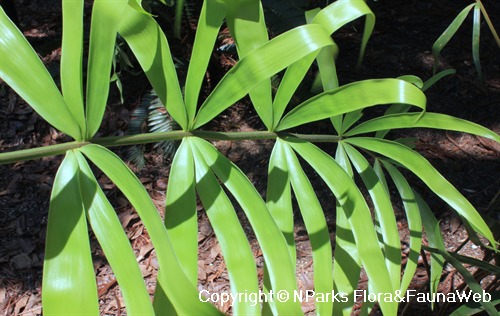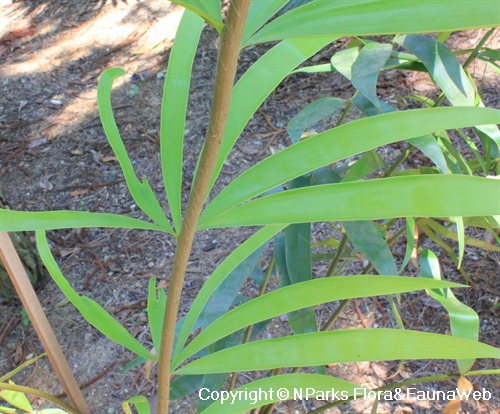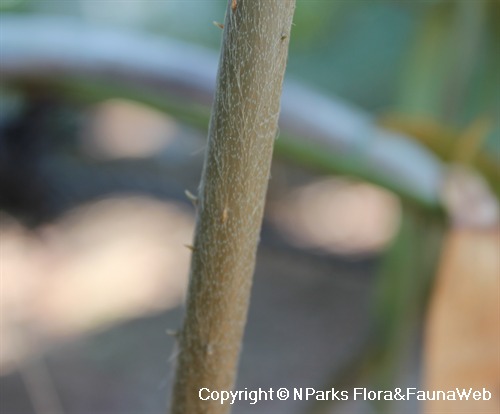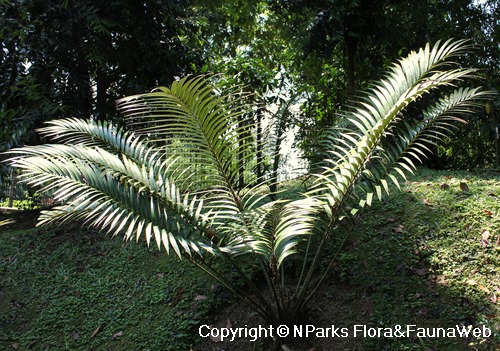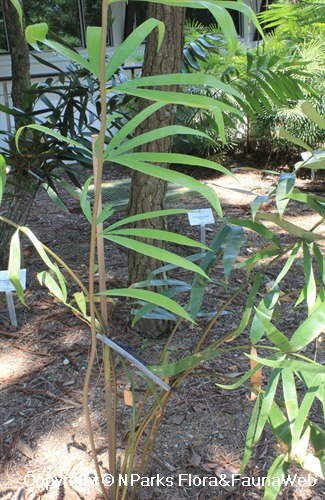
Name
Classifications and Characteristics
| Plant Division | Gymnosperms (Non-Flowering Seed Plants) (Cycad) |
|---|---|
| Plant Growth Form | Cycad |
| Lifespan (in Singapore) | Perennial |
| Plant Shape | Open |
| Maximum Height | 1.8 m to 2.4 m |
Biogeography
| Native Distribution | Mexico |
|---|---|
| Native Habitat | Terrestrial |
| CITES Protection | True (Appendix I) |
Description and Ethnobotany
| Foliage | It has very ornamental foliage. The leaflet are thin and papery, they are grouped in unique bow-tie shape clusters on the rachis (3-12 per node), give a bamboo like appearance. Hairy rachis. |
|---|---|
| Stems | It is a dwarf plant with a small subterranean(short, underground) stem, producing relatively long and upright leaves. |
| Flowers | Pollen cones 18-25cm in length. Seed cone 6-20cm. The seeds are covered with light yellow pulp. |
| Habitat | Occurs at approximately 850-1,300m altitude in the cloud zone in deciduous oak woodlands. Plants grow in heavy black clay and among limestone rocks. |
| Cultivation | Prefer partial shade. Grown faster in full sun but do not looks good as the sun seems to bleach out the leaves and makes them look yellow. Cold tolerant. |
Landscaping Features
| Desirable Plant Features | Ornamental Foliage |
|---|---|
| Landscape Uses | Parks & Gardens, Small Gardens |
Plant Care and Propagation
| Light Preference | Semi-Shade, [Remarks] (The plant grown faster in full sun but do not looks good as the sun seems to bleach out the leaves and makes them yellow. In shade, the leaves will look good but slow growing and looks thin.) |
|---|---|
| Water Preference | Moderate Water, [Remarks] (Needs more water then other cycads. This species has underground stem, so good drainage is very important.) |
| Plant Growth Rate | Moderate |
| Rootzone Tolerance | Moist Soils, Well-Drained Soils |
Image Repository
Others
| Master ID | 30766 |
|---|---|
| Species ID | 5105 |
| Flora Disclaimer | The information in this website has been compiled from reliable sources, such as reference works on medicinal plants. It is not a substitute for medical advice or treatment and NParks does not purport to provide any medical advice. Readers should always consult his/her physician before using or consuming a plant for medicinal purposes. |

